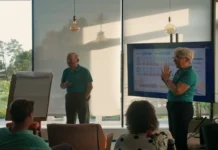
Renault boasts over 10 years of success in developing and selling electric vehicles which, in combination with its experience in Formula One and its enthusiastic and passionate engineering, testing and control teams, has led to the development of the innovative E-TECH hybrid powertrains.
When Renault launched its first electric vehicle in 2010, it also set about gaining experience with electrified powertrains – to develop hybrid technology that would provide customers with a smooth transition towards going all-electric. To do this, the engineers needed to demonstrate that they had the ideal solution for meeting a particular set of specifications.
It needed to be accessible, light, suitable for vehicles of all sizes and offer a minimum all-electric range of 31 miles.
In other words, it needed to deliver an effective hybrid solution for all. Introduced in 2020 across Clio, Captur and Megane models – and also featuring in the All-New Arkana – the story behind E-TECH’s development is both unusual and inspiring.
Nicolas Fremau, Renault’s Hybrid Architecture Expert, looks back at how the E-TECH story all started with a LEGO model.
TAKING INSPIRATION FROM A LEGO MODEL
For Nicolas Fremau, it was important to consider the electric motor as the main component in the hybrid powertrain, enabling the car to start up purely in EV mode. This presented a challenge in working out what transmission should be used between the electric motor and petrol engine.
With the need to keep things simple, compact and light, he imagined a radical solution. It was to use a clutchless transmission with gearbox synchronisers, utilising dog clutch technology normally found in motorsport.
“When I saw my son playing with LEGO Technic sprockets at home, I said to myself ‘well, it’s not so far from what I’d like to do’. So, I bought what I needed piece by piece to have all the assembly elements,” says Nicolas.
He used the Christmas holidays to make a model of the innovative transmission out of LEGO that he’d first imagined on paper.
He explains: “I had the idea of doing this first to help me understand what to do. After about twenty hours of ‘work’ under the slightly surprised eye of my son, the model was born.”
This wasn’t a case of just fitting bricks together. Nicolas had to assemble the different axes and transmission rings, glue them and drill them to fit into a cradle, as well as motorise the whole system. It was a piece of engineering that allowed him to live-test the different modes of operation between the engines.
The process of trialing the possible modes of operation also allowed Nicolas to discover new ones that he hadn’t previously thought of in theoretical analysis. This strengthened his conviction that he was on the right track with this prototype – most likely the least expensive in Renault’s history – which is as surprising and unexpected as the technical solution was innovative.
IF WE CAN MAKE IT OUT OF LEGO…
It was a gamble presenting this model to the team, project manager Gérard Detourbet, who was the ‘father’ of the first Dacia range and knew all about simplified, low-cost solutions, and Director of Research Rémi Bastien.
“Renault has always been a very open company, especially when it comes to research. But the day I brought the model to the Gérard Detourbet and Rémi Bastien, I didn’t know how they would react. They walked around the model, they touched it and they felt that we had a real object. And I will always remember Gérard Detourbet’s remark: ‘If we can make it in LEGO, it will work!’”
This green light meant Nicolas and his colleagues had to make the commitment to bring this concept to life in a car that would be on sale in just 18 months.
“It was a challenge for the entire research engineering department, with the mobilisation of the skills of people in Control, Mechanical Design etc.,” recalls Nicolas Fremau.
For the small team of enthusiasts committed to Renault’s electrified future, and this new hybrid powertrain as part of it, the hard work had just begun.
Watch the full video of the E-TECH’s development journey here:







